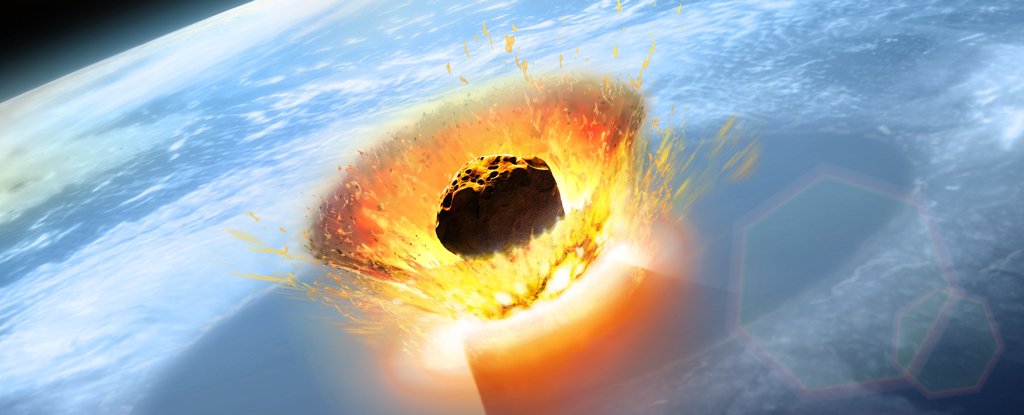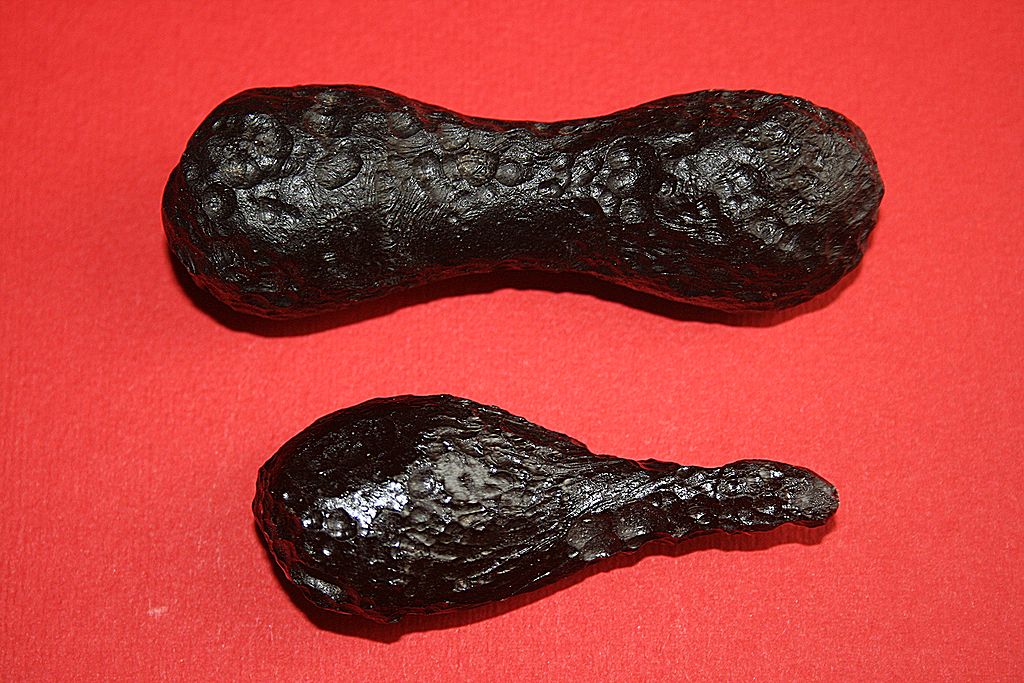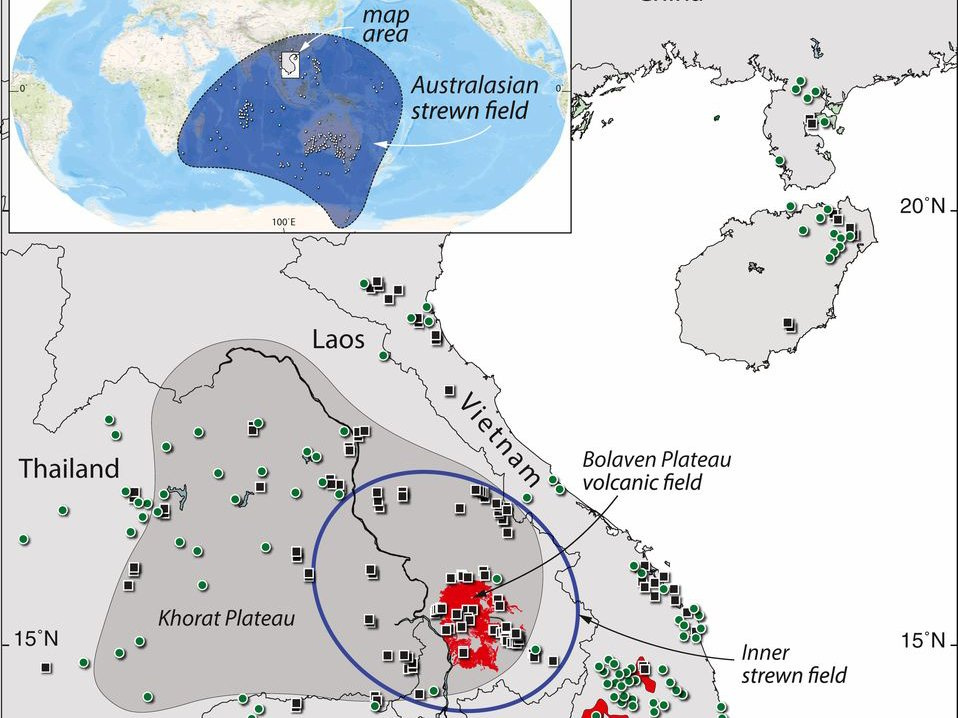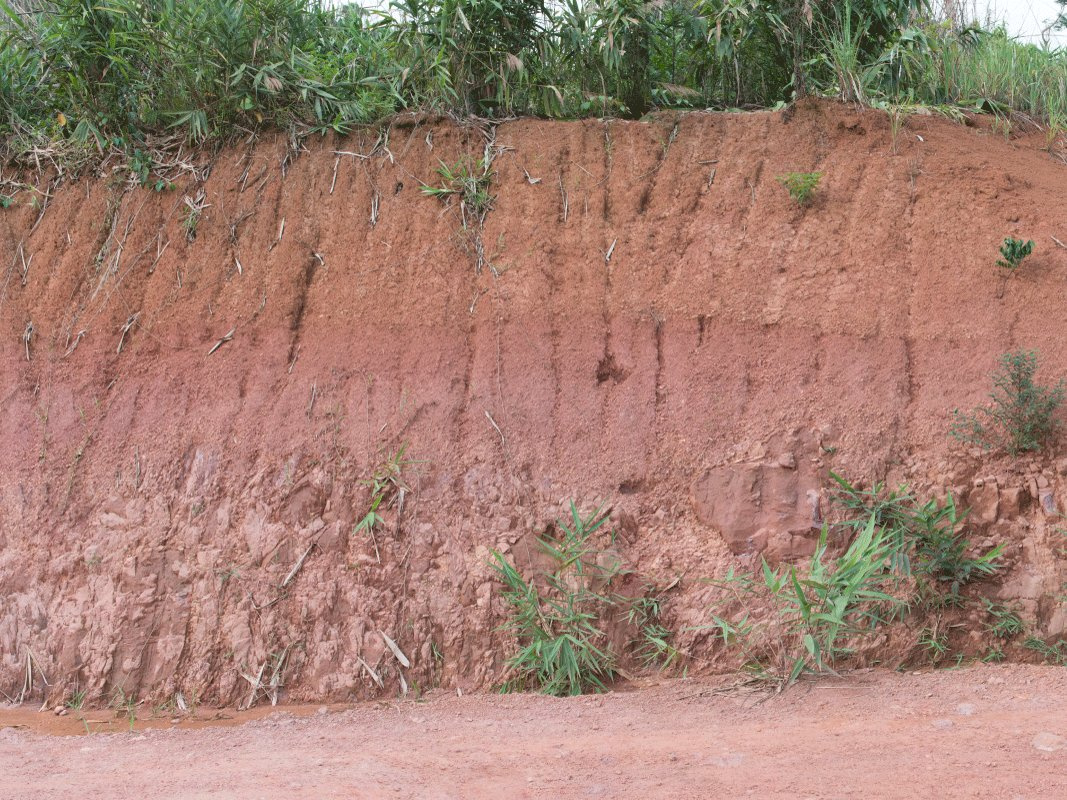About 800,000 years ago, a monster space rock struck the Earth hard and fast. The impact of the 1.2 mile-wide (1.9 kilometre-wide) meteorite flung debris across 10 percent of the planet's surface.

Scientists have found this ancient debris, mostly in the form of glass blobs known as tektites, in Asia, Australia, and Antarctica. But until now, researchers had never found the site where the meteorite hit.
They'd been searching unsuccessfully for more than a century.
In a new study published in the journal Proceedings of the National Academy of Sciences, scientists describe the location where they think this massive rock crashed: a volcanic field in southeastern Laos.
"There have been many, many attempts to find the impact site and many suggestions, ranging from northern Cambodia, to central Laos, and even southern China, and from eastern Thailand to offshore Vietnam," Kerry Sieh, the lead author of the study, told CNN.
Sieh's team's research offers strong evidence that the crater is buried underground – which explains why researchers couldn't find it before.
The case of a missing impact crater
When a meteorite hits, it super-heats rocks at the point of impact and catapults them into the sky. These liquefied rocks then cool into tektites. By examining where tektites are strewn, scientists can trace the origin of the meteorite that created them.
 A sample of two tektites. (Brocken Inaglory/Wikimedia/CC BY 3.0)
A sample of two tektites. (Brocken Inaglory/Wikimedia/CC BY 3.0)In the case of this strike, the tektites told scientists that a massive meteorite struck Earth's surface 800,000 years ago, somewhere between the three continents where they found the glass bits.
The greatest density of tektites have been found in Indochina – the peninsula that consists of Cambodia, Laos, and Vietnam – making that the most logical place to search for the crater.
But a meteorite that big should have left a mile-wide scar on the Earth and plunged 300 feet (91.4 meters) into the ground, according to the study authors.
"That's a very difficult size hole to make go away," Aaron Cavosie, an Australian planetary scientist who was not involved in the study, told the New York Times.
Impact craters can, however, get buried under shifting tectonic plates or scraped away by erosion (though Indochina is a relatively stable part of our planet).
In his hunt for the crater, Sieh first looked at three ancient impact sites in Cambodia, central Laos, and southern China. But each crater was tens of millions of years older than the crash site has was searching for.
Then, in a region of southern Laos called the Bolaven Plateau, the researchers found lava flows that fit the age bracket: They were between 51,000 and 780,000 years old.
 Upper left map shows how far the tektites spread. The main image shows Bolaven volcanic field in Laos. (Sieh et al.,PNAS, 2019)
Upper left map shows how far the tektites spread. The main image shows Bolaven volcanic field in Laos. (Sieh et al.,PNAS, 2019)Eruptions on that 2,300-square-mile (6,000-square-kilometre) plateau had created a bed of layered lava 1,000 feet (300 metres) deep – a volcanic field big enough to hide a meteorite crater.
"This thick pile of volcanic rocks does indeed bury the site of the impact," Sieh and his co-authors wrote.
All evidence points to this spot in Laos
To arrive at their conclusion, Sieh's team compared the chemistry of the rocks in the volcanic field to that of the tektites. They matched.
Then they measured gravitational fields around the Bolaven Plateau. Sure enough, the researchers found an underground, elliptical area 300 feet (90 metres) thick, 11 miles (18 kilometres) long, and 8 miles (13 kilometres) wide where gravity got weird.
Because craters are filled with less dense material than the surrounding rock, they have a slightly weaker gravitational pull. The gravity signals in the Laotian volcanic field indicated the presence of a subterranean crater.
What's more, the lava on top of the potential impact crater was less than 800,000 years old.
The final piece of evidence sat 12 miles (19 kilometres) away from the summit of the volcanic field: A patch of sandstone looked to be battered with debris.
 (Kerry Sieh)
(Kerry Sieh)The sandstone outcrop contained fractured quartz grains, which the geologists think were proximal ejecta from the meteorite – the term for material that gets pushed out from an impact site into nearby rocks.
According to Cavosie, the new study does not determine unambiguously that the impact crater is buried in Laos, but he told The New York Times that "it's a great lead on a new site worthy of investigation."
Scientists will need to drill deeper into the lava bed – likely a few hundred meters down – to find the evidence they need to put this geological mystery to rest.
This article was originally published by Business Insider.






No comments:
Post a Comment